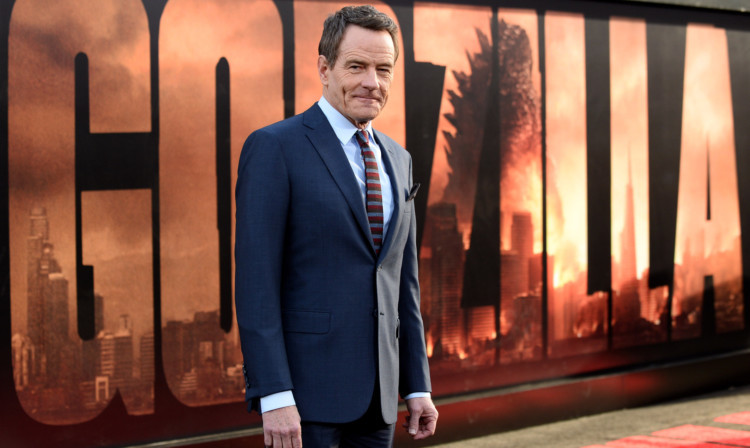
Bryan Cranston has had more luck than most at choosing the right script recently.
The 58-year-old has won multiple Emmy awards and a Golden Globe for his leading role in Breaking Bad. He also appeared in last year’s Oscar winner for Best Film, Argo.
So when the veteran actor reveals his secret in picking a project, young actors should sit up and listen. For Bryan, it’s not so much having a good feeling about something as whether a script he’s reading is feline good.
“Actors should pounce on good material like cat-nip,” he told me on a visit Britain, “and claw their way to be in a position to get the job.
“If I was to tell actors to become talented at anything it would be to be able to identify well written material and attach themselves to it as quickly as possible.”
The latest project to be identified by Bryan as worth sharpening his claws for is Godzilla, a blockbuster reboot of the giant lizard-like creature from Japan that first appeared on movie screens in 1954.
While Godzilla leaves a trail of destruction wherever he roams in the film, which also stars Aaron Taylor-Johnson and Sally Hawkins, the “King of the Monsters” has been reimagined in largely sympathetic fashion by British director Gareth Edwards, which is what made it an interesting film for Bryan to attach himself to.
“I remember watching the original film as a kid,” Bryan recalled. “Godzilla with his fiery breath . . . he just destroyed everything in his wake.
“It was actually a man in a suit stomping through a miniature Tokyo, but it was marvellous to a young kid. There’s a part of me that will always be that boy, but the whole sensibility of how to make a movie like this has matured; the audience has evolved.
“Gareth said to me that this film would be different, it’s not just about Godzilla smashing things up. You’re going to root for him, but you also want to be connected to what’s happening and root for the characters to make it through.
“Our film is steeped in character, which makes the fantastic elements of the story more fulfilling because, as you follow these people through this adventure, you see good and bad decisions being made and relationships being pulled apart and brought together. All the elements of any good drama are here, wrapped up in a big, epic monster movie.”
Born to a showbusiness family and raised in California, Bryan made his acting debut at the age of eight in a commercial for an American charity. It wasn’t until he finished university, however, that acting became a serious consideration. While on a cross-country motorcycle trip with his brother, Bryan joined a community theatre group.
On returning to Los Angeles he enlisted with an acting agent, but the most noteworthy event of his first two decades on screen came when he met his second wife, Robin Dearden, on Airwolf. He was an episode’s bad guy and she was his hostage.
It wasn’t until landing a role as the hapless Hal in seven years of Malcolm In The Middle that Bryan’s career began to take off. He followed that up by playing the iconic Walter White in Breaking Bad a performance no less a judge as Sir Anthony Hopkins rated as “the best acting I have seen . . . ever” in a letter written after watching all five series in a couple of days.
“Without Breaking Bad I wouldn’t be sitting here,” commented Bryan on how the series has helped raise his profile. “To be involved with something like that was a great adventure for me and when it came to say goodbye I was very sorrowful but also very proud.
“I think actors have the same sensibilities as athletes in that they want to go out at the top and to be able to look back proudly.
“Once again it comes down to storytelling. Whether it’s the big screen, small screen or stage, good storytelling will always be the cornerstone for me.”
Godzilla – Our Verdict 4/5
Having enjoyed favourable reviews with the low-budget Monsters in 2010, which built up the tension by keeping the aliens off screen most of the time, Gareth Edwards’s real success in Godzilla is to follow a similar formula even when given a much bigger pot of cash to spend.
It’s well over halfway through the movie that the monster reveals itself, giving enough time for characters and a story arc to develop.
The narrative is then trampled underfoot in a building-busting finale (it is a disaster movie, after all) but the strong foundations prevent everything from crashing down with it.

Enjoy the convenience of having The Sunday Post delivered as a digital ePaper straight to your smartphone, tablet or computer.
Subscribe for only £5.49 a month and enjoy all the benefits of the printed paper as a digital replica.
Subscribe